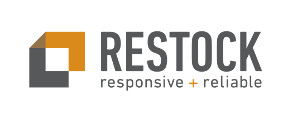
|
Restock PTY LTD |
|---|

Choosing the right type of face mask protection has never been more important. All the different standards, and certifications make it confusing. It is difficult to know which face mask will provide you the required level of protection without being overspecced, therefore avoiding unnecessary costs.
Protectaware Level 3 Surgical masks are graded through ASTM (American Society for Testing and Materials), who publish technical standards for products, materials, and systems.
Furthermore, the Protectaware face masks are registered with TGA (Therapeutic Goods Australia) which is the regulatory body for therapeutic goods in Australia. It is a Division of the Australian Department of Health established under the Therapeutic Goods Act 1989.
If you are procuring for Frontline Healthcare workers or workers in areas of high-risk fluid exposure, look for masks which have the ASTM level printed on the box. It is also recommended that you source products that are approved by TGA like the Protectaware Face Masks. Look for the ARTG (Australian Therapeutic Goods Register) number and check the ARTG Register to check validity.
|
(AS) 4381: 2015 Single use face masks - Characteristics of Level 1, Level 2 & Level 3 Face Masks |
|||
|
Levels |
Level 1 |
Level 2 |
Level 3 |
|
Characteristics |
Low Barrier Protection |
Moderate Barrier Protection |
Maximum Barrier Protection |
|
Definition |
Low barrier protection. general use for short procedures and exams that do not involve aerosols, sprays, or fluids. Materials evaluated for resistance to penetration by synthetic blood at minimum velocity |
Moderate barrier protection: for low to moderate levels of aerosols, sprays and/or fluids. Materials evaluated for resistance to penetration by synthetic blood at the middle velocity. |
Maximum barrier protection: for heavy levels of aerosols, sprays and/or fluids. Materials evaluated for resistance to penetration by synthetic blood at the maximum velocity. |
|
Application |
For general purpose medical procedures, where the wearer is not at risk of blood or bodily fluid splash or to protect staff and/or patient from droplet exposure to microorganisms (e.g., patient with upper respiratory tract infection visits General Practitioners |
For use in emergency departments, dentistry, changing dressings on small wounds or healing wounds where minimal blood droplet exposure may possibly occur (e.g., endoscopy procedures) |
For all surgical procedures, major trauma first aid or in any area where the healthcare worker is at risk of blood or body fluid splash (e.g., orthopaedic, cardiovascular procedures). |
|
Bacterial Filtration Efficiency (BFE) % |
≥ 95% |
≥ 98% |
≥ 98% |
|
Differential Pressure (Delta P) Differential Pressure mm H2O/cm2 |
<4.0 |
<5.0 |
<5.0 |
|
Resistance to penetration by synthetic blood, minimum pressure in mmHg for pass result |
80 mmHg |
120 mmHg |
120 mmHg |
|
Source: Standard AS 4381:2015 |
|||
Further important info: